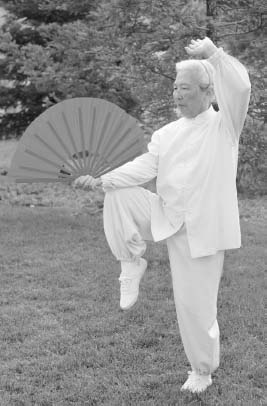Daoism and CctCustoms and Rituals |
Is music important in Daoist and CCT ritual? What about dance? |
Music has been an essential ingredient in virtually all indigenous Chinese religious ritual for millennia. Students of Daoist masters are expected to begin their formal training by becoming accomplished in the use of a full range of string, wind, and percussion instruments. These ancient devices include not only the mysterious booming gongs and bowed or plucked strings many readers may already associate with Asian music, but the less well-known woodwinds whose high reedy voices produce an almost eerie effect. Daoist ritual music has been related to imperial court music and, somewhat more recently, Chinese opera. Ritual music aims at stirring feelings uniquely appropriate to the occasion. In these last several respects, Daoist ritual music has much in common with the music that is an essential ingredient in many Shinto ceremonies in Japan. Two percussion instruments used to keep time for chanting and recitation of scripture are virtually identical to those used for the same purpose in Buddhist ritual all over Asia. Large-scale chanting on especially solemn occasions is accompanied by an ensemble of four or more instruments of various types. Percussion instruments along with other wind and string instruments back up the lead played on oboe-like woodwinds, lutes, and bowed strings. When a single master recites a sacred text, a solo instrument is generally the only accompaniment.
Liturgical dance is just as important as music. During the festival of Cosmic Renewal, for example, the principal ritual specialist performs a dance of shamanic origin called the Steps of Yu. The dancer traces the outline of the Big Dipper to commune with the god of the Pole Star. He ascends symbolically into the heavens to visit the Three Pure Ones. Some dances engage the assembled community of worshippers, as when all gathered celebrate the new light by circumambulating the altar. Another dance functions as an offertory procession in which worshippers bring offerings to the ritual leaders who in turn present them to the gods.

A woman practices tai ji, a form of martial arts designed to enhance health and well-being. It also has physical benefits and improves one’s mental concentration.
